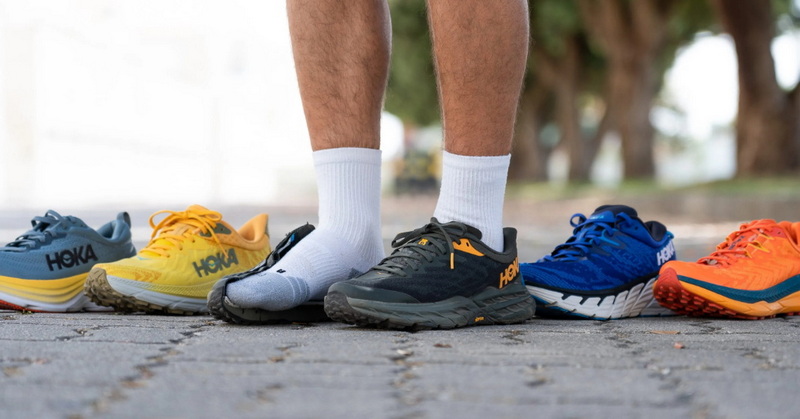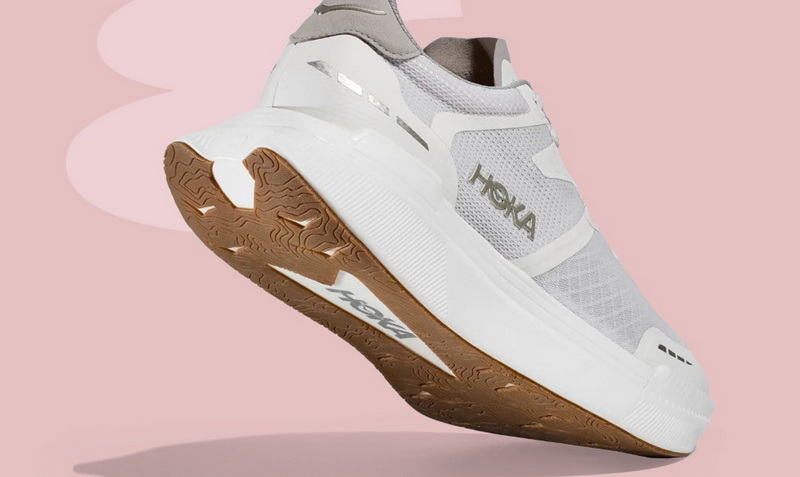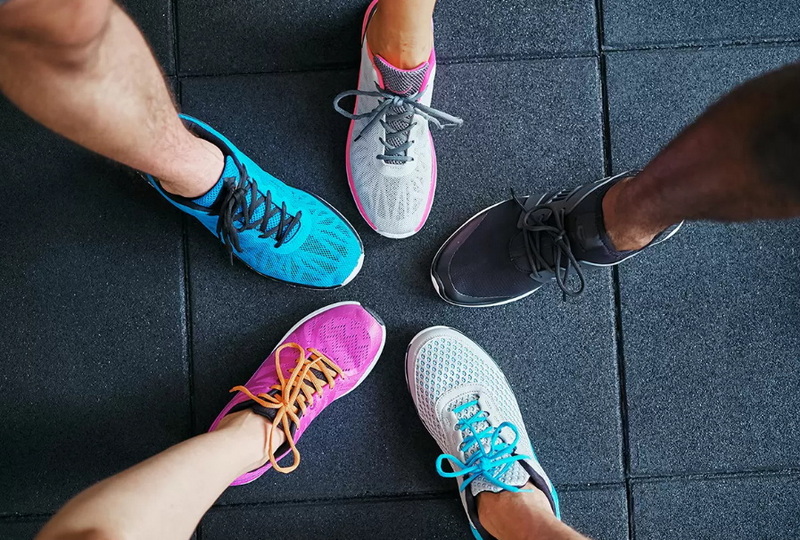Content Menu
● Understanding Shoe Sizes
>> Shoe Size Charts
>> Conversion Factors
● Anatomical Differences
>> Foot Shape
>> Length vs. Width
● Design Considerations
>> Style and Aesthetics
>> Support and Cushioning
>>> Arch Support
● Trying On Shoes
>> Fit Test
>> Socks Matter
● Popular Shoe Types
>> Athletic Shoes
>> Casual Shoes
>> Formal Shoes
● Buying Tips
>> Know Your Size
>>> Measuring Your Feet
>> Try Different Brands
>> Consider Customization
● The Impact of Footwear Technology
>> Materials Used
>> 3D Printing Technology
● Cultural Influences on Shoe Design
>> Fashion Trends
>> Social Norms
● Conclusion
● FAQ
>> 1. Why do men's and women's shoe sizes differ?
>> 2. Can women wear men's shoes?
>> 3. What should I consider when buying shoes?
>> 4. Are there unisex shoe options available?
>> 5. How can I ensure a good fit when buying online?
When it comes to footwear, one of the most common questions is whether men's and women's shoes fit the same. This topic is essential not only for those looking to buy shoes but also for understanding the differences in shoe design, sizing, and comfort. In this article, we will explore the distinctions between men's and women's shoes, how sizing works, and what factors contribute to these differences.

Understanding Shoe Sizes
Shoe sizes can vary significantly between men and women due to anatomical differences.
Shoe Size Charts
- Men's Shoe Sizes: Typically range from size 6 to 16, with half sizes available.
- Women's Shoe Sizes: Generally range from size 4 to 12, also including half sizes.
To illustrate these differences, here is a basic comparison chart:
| Men's Size | Women's Size |
| 6 | 7.5 |
| 7 | 8.5 |
| 8 | 9.5 |
| 9 | 10.5 |
| 10 | 11.5 |
Conversion Factors
For those looking to convert sizes, a common rule of thumb is that a men's shoe size is approximately 1.5 sizes larger than a women's size. For instance, if a woman wears a size 8, she would likely wear a men's size 6.5.
Anatomical Differences
The primary reason for the difference in shoe fit between men and women lies in anatomical variations.
Foot Shape
- Men's Feet: Generally wider at the forefoot and have a higher instep.
- Women's Feet: Tend to be narrower with a more pronounced arch.
This difference in foot shape affects how shoes are designed and constructed for each gender.
Length vs. Width
While men's shoes are typically longer and wider, women's shoes are designed with a narrower fit. This means that even if two shoes are labeled the same size, they may not fit the same way due to these dimensional differences.
Design Considerations
The design of men's and women's shoes also varies significantly beyond just sizing.
Style and Aesthetics
- Men's Shoes: Often feature more robust designs with neutral colors.
- Women's Shoes: Tend to be more fashion-forward with vibrant colors and intricate designs.
This stylistic difference can influence how individuals perceive comfort and suitability for various occasions.
Support and Cushioning
Men's shoes often provide more cushioning and support for heavier weights, while women's shoes might focus more on style but still offer adequate support tailored for lighter body weights.
Arch Support
Women generally have higher arches than men, which can affect the type of arch support needed in footwear. Shoes designed specifically for women often incorporate features that accommodate this difference.
Trying On Shoes
When trying on shoes, it's crucial to consider several factors to ensure a proper fit.
Fit Test
- Stand up straight and walk around in the shoes.
- Ensure there is about a thumb's width of space between your longest toe and the front of the shoe.
- Check for any pinching or discomfort around the sides or top of your foot.
Socks Matter
The type of socks you wear can also affect shoe fit. Thicker socks will require slightly larger shoes than thinner ones. When trying on shoes, consider wearing the type of socks you plan to use regularly.

Popular Shoe Types
Different types of shoes serve various purposes, which can also influence their fit.
Athletic Shoes
- Designed for performance.
- Men's athletic shoes often provide more stability due to higher weight distribution.
- Women's athletic shoes may include additional cushioning designed for lighter body weights.
Athletic footwear is engineered based on the biomechanics of each gender's movement patterns during physical activities like running or jumping.
Casual Shoes
- Focused on comfort.
- Women's casual shoes may have more stylish designs but should still offer adequate support.
Casual footwear often prioritizes style alongside comfort, leading to variations in fit based on brand design philosophies.
Formal Shoes
Formal footwear can also differ significantly between genders. Men's dress shoes tend to be more structured with less flexibility compared to women's options, which may incorporate softer materials for enhanced comfort during extended wear.
Buying Tips
When purchasing shoes, especially if you're considering buying men's or women's styles interchangeably, keep these tips in mind:
Know Your Size
Always measure your feet before shopping. Foot size can change over time due to various factors such as age or weight changes.
Measuring Your Feet
To measure your feet accurately:
1. Stand on a piece of paper with your heel against a wall.
2. Mark the longest part of your foot on the paper.
3. Measure from the wall to your mark using a ruler.
4. Repeat for both feet as one foot may be larger than the other.
Try Different Brands
Different brands have unique sizing standards. Always try on multiple brands to find the best fit for your feet. Some brands may run larger or smaller than standard sizes.
Consider Customization
If standard sizes don't fit well, consider custom-made options that cater specifically to your foot shape. Custom orthotics can also provide additional support tailored to individual needs.
The Impact of Footwear Technology
Advancements in footwear technology have significantly influenced how shoes fit today compared to previous generations.
Materials Used
Modern materials such as memory foam, gel cushioning systems, and breathable fabrics enhance comfort and adaptability in both men's and women's footwear. These innovations allow for better arch support and shock absorption tailored to different foot shapes.
3D Printing Technology
The rise of 3D printing technology allows manufacturers to create customized shoe designs that conform precisely to individual foot shapes. This technology has made it easier for consumers with unique foot structures or conditions (like flat feet or high arches) to find comfortable footwear solutions without compromising style.
Cultural Influences on Shoe Design
Cultural perceptions also play a role in how men's and women's shoes are designed and marketed.
Fashion Trends
Fashion trends can dictate shoe styles that may not necessarily prioritize comfort but focus heavily on aesthetics. For example, high heels are predominantly marketed towards women despite their known discomforts; meanwhile, men's fashion often leans towards practicality with styles like loafers or oxfords that balance formality with comfort.
Social Norms
Social norms regarding gender roles can influence footwear choices as well; traditionally masculine styles may be discouraged from being worn by women due to societal expectations, despite many women finding them comfortable and stylish.
Conclusion
In conclusion, while men's and women's shoes may share similar sizing labels, they do not fit the same way due to anatomical differences in foot shape, design considerations, cultural influences, and intended use. Understanding these distinctions can help consumers make informed decisions when purchasing footwear. Whether you are looking for athletic shoes or casual wear, always prioritize comfort and proper fit over style alone.

FAQ
1. Why do men's and women's shoe sizes differ?
Men's and women's shoe sizes differ primarily due to anatomical variations in foot shape and size distribution between genders.
2. Can women wear men's shoes?
Yes, women can wear men's shoes by converting their size using the general rule that men's sizes are about 1.5 sizes larger than women's sizes.
3. What should I consider when buying shoes?
Consider foot width, arch type, intended use (athletic vs casual), and personal comfort when selecting footwear.
4. Are there unisex shoe options available?
Yes, many brands offer unisex shoe options that cater to both men and women without strict adherence to gender-specific sizing.
5. How can I ensure a good fit when buying online?
Measure your feet accurately at home using a ruler or measuring tape and consult each brand's specific sizing chart before making an online purchase.

















